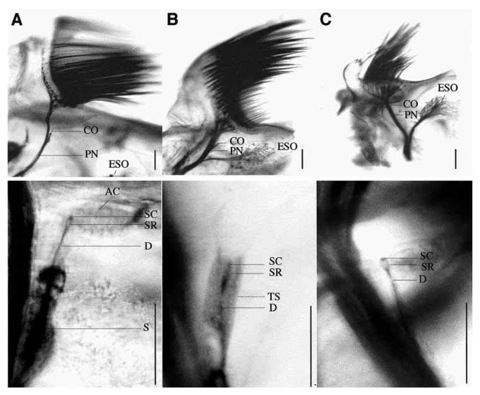Göpfert, M.C. and Wasserthal, L.T. (1999b): Auditory sensory cells in hawkmoths: identification, physiology and structure. J. Exp. Biol. 202, 1579-1587.
In contrast to previous assumptions, mouthparts form hearing organs not only in choerocampine hawkmoths but also in some distantly related acherontiine hawkmoth species. Four of the six acherontiine species studied revealed responses to ultrasonic sounds when stimulated during tethered flight. The responses included changes in flight speed and non-directional turns. Individuals from two species also responded by emitting sound. The minimum thresholds of the flight pattern changes were approximately 70 dB in all species studied, with speciesspecific best frequencies between 30 and 70 kHz. Some acherontiine species also move their tongue in a stereotyped way when stimulated acoustically. The activity of the muscles involved in this tongue reflex was characterized in the present study and used in combination with ablation experiments to localize the hearing organ. These experiments revealed auditory functions of the labial palps and the labral pilifers similar to those found in Choerocampina. The palp contributes a 20–25 dB rise in sensitivity, whereas the pilifer appears to contain the sensory organ. Structural differences suggest a convergent evolution of hearing in hawkmoths: in the place of the swollen palps of Choerocampina, acherontiine species capable of hearing possess a scale-plate of the palps that interacts with an articulating pilifer, while this modification is absent in closely related non-hearing species.

Pilifers with CoCl2-stained chordotonal organs (CO) at the end of the pilifer nerve (PN), A and C hearing species, B deaf species

